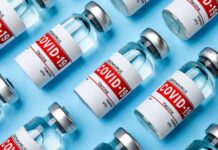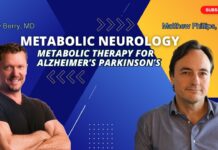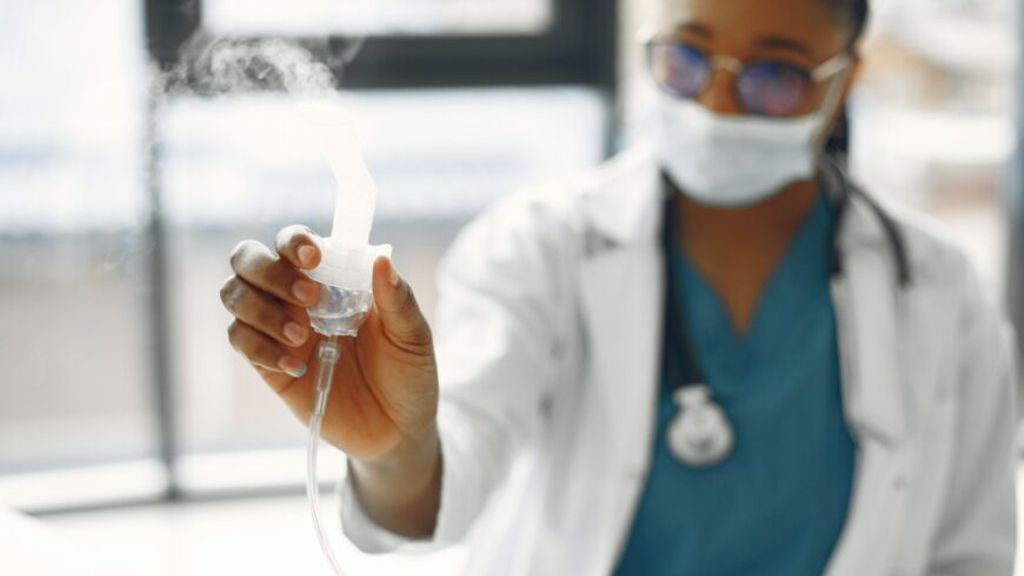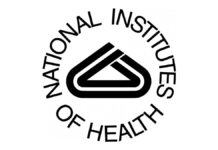
Nebulized hydrogen peroxide improves symptoms of COVID-19 by killing viruses, improving oxygenation, and optimizing the redox pathway.
STORY AT-A-GLANCE
- As long as your immune system is up to par, your body can overcome most if not all viral invaders.
- Beta carotene is a water-soluble form of vitamin A that does not provide immune boosting benefits. For that, you need the fat-soluble form, so make sure you’re taking emulsified vitamin.
- Hydrogen peroxide is a topical disinfectant that can kill viruses. It’s also an oxidative therapy that stimulates the redox pathway, thereby stimulating energy production and repair cells. It also improves oxygenation and may have a detoxifying effect on your lungs.
Dr. David Brownstein, who has a clinic just outside of Detroit, Michigan, has successfully treated more than 200 patients with nebulized hydrogen peroxide.
A peer-reviewed consecutive case series of 107 COVID-19 patients treated with nebulized peroxide and other remedies, including oral vitamins A, C, and D, iodine, intravenous (IV) hydrogen peroxide and iodine, as well as intravenous vitamin C, along with intramuscular ozone, was published in the July 2020 issue of Science, Public Health Policy, and the Law. [1] All patients survived.
Nebulized Peroxide and Iodine
At the time of this interview, the number of patients successfully treated with these all-natural strategies exceeds 230, and he has now published a book describing his approach, titled “A Holistic Approach to Viruses.”
Early Treatment Might Curtail Long-Haul Syndrome
In my interview with Dr. Vladimir Zelenko, in which we discuss hydroxychloroquine treatment, he pointed out that none of the patients treated within the first five days of symptom onset went on to develop long-haul syndrome.
This has by and large been Brownstein’s experience as well. Of the initial 107 patients included in his case report, 2 percent developed long-haul syndrome. This is in stark contrast to the 20 percent to 40 percent reported elsewhere, he notes.
“The huge disaster of COVID-19 that history will tell someday is the powers that be telling us there’s nothing we can do. Just stay home, lock yourself in your basement, quarantine yourself from your family, wear your mask, social distance—that’s it. No therapies, no nothing, just wait till the vaccine comes out.
“This has resulted in over 400,000 deaths. Maybe the death numbers are exaggerated, but a lot of people have died because the governments and the powers that be, the AMA and everybody else out there, have said ‘There’s nothing you can offer’ and ‘Don’t offer anything because it hasn’t gone through randomized, double blind, placebo controlled studies … and if doctors do it, we’re going to censor them and hold them accountable.’ That’s been the biggest disaster of this whole thing,” Brownstein says.
Most Are Deficient in Basic Immune Boosters
It’s important to recognize as long as your immune system is up to par, your body can overcome most if not all viral invaders. And, your immune system function is dependent on proper nutrition, not drugs or vaccines. Brownstein’s use of nutritional supplements and other immune boosting strategies goes back decades, well before there were antiviral drugs available.
He points out that a vast majority of people have low levels of vitamin C, for example, which helps both your innate and adaptive immune systems. About 90 percent of his patients are also deficient in vitamin D, which is another crucial immune regulator. You have vitamin D receptors in both your innate and adaptive immune systems. Vitamin D deficiency is also associated with sepsis.
Many are also deficient in vitamin A. Here, the devil’s in the details. Beta carotene is a water-soluble form of vitamin A that does not provide the immune boosting benefits of vitamin A. For that, you need the fat-soluble form. So, make sure you’re taking emulsified vitamin A.
“Beta carotene does not provide the immune system affects vitamin A does,” Brownstein says. “Vitamin A helps minimize cytokine storm. It helps minimize the inflammatory factors … It helps to lower TNF alpha. And the white blood cells need vitamin A as an integral part of their functioning. So, it helps both the innate and the adaptive immune systems fight back.”
Vitamins A, C, D, and Iodine
For decades now, Brownstein has prescribed vitamins A, C, and D to his patients, and at the first signs of illness, he instructs them to jack up the dosages to 100,000 units of vitamin A and 50,000 units of vitamin D3 per day for four days, along with 1,000 milligrams of vitamin C per hour during waking hours until symptoms recede.
“Those were the first three things I did,” he says. “What I found was that when people got the flu or flu-like illness, and they started taking these three things immediately they would get better in 24 hours. It was amazing.
“A few years later, I learned about iodine and started testing, and found 97 percent of people are deficient in iodine. The vast majority markedly deficient, meeting WHO [World Health Organization] standards of severely deficient in iodine. So, I added iodine into that protocol.
“My average dose of iodine for most people is—if they don’t have glandular problems like problems with the breasts, prostates, thyroid, pancreas, ovaries, uterus—about 12.5 milligrams a day. If they have problems with those glands, it would be more.
“The average dose of iodine over the years that I’ve had my patients on is 25 milligrams a day. And it’s a combination of iodine and iodide, which is found in Lugol’s solution. That was quickly added into that four-part regimen, and that made a huge difference. People liked that. They felt better with it.”
As time went on, he discovered case histories describing the treatment of pneumonia, bronchitis, and other lung problems with nebulized iodine. As a result, he added that into his antiviral regimen as well.
If you’re using 5 percent Lugol’s solution, simply add one drop to your nebulizer after filling it with the diluted peroxide solution. If you’re using 2 percent Lugol’s solution, which is available over the counter, add two drops. Of course, this should be done with a doctor’s consultation.
IV Peroxide, Vitamin C, and Ozone
A few years after that, he came across hydrogen peroxide, which can be used both intravenously and in a nebulizer. The fact that your body naturally produces huge amounts of hydrogen peroxide in all cells can clue you in to its importance.
“I started using IV and nebulized peroxide, and I mixed the nebulized peroxide with a nebulized iodine in one solution. For people developing lung problems, pneumonia, lung cancer or COPD, if they were coughing, couldn’t breathe, if they were wheezing and things like that, adding nebulized hydrogen peroxide at 0.04 percent dilution and one drop of 5 percent Lugol’s solution, which supplies 6.25 milligrams of iodine, really helped a lot of people out.”
Eventually, he started adding in IV vitamin C, hydrogen peroxide, and ozone therapy.
Nebulized Peroxide Basics
Based on Brownstein’s experience, I now also recommend adding iodine when nebulizing, as it appears to make it even more effective.
Keep in mind that the peroxide needs to be diluted with saline. I recommend diluting it down to 0.1 percent. Brownstein recommends diluting it to 0.04 percent. Tom Levy recommends 3 percent and higher. Ideally, use food grade hydrogen peroxide, as it does not have any harmful stabilizers. If you pre-dilute to 0.04 percent, it will stay potent for about three months when kept refrigerated. If you do a 0.1 percent dilution, it may stay potent a bit longer.
If you don’t have access to saline, you could make your own by mixing one teaspoon of unprocessed salt (such as Himalayan salt, Celtic salt or Redmond’s real salt) into a pint of water. This will give you a 0.9% saline solution, which is about the concentration found in body fluids. Using that saline, you will then dilute the hydrogen peroxide as described in this chart.
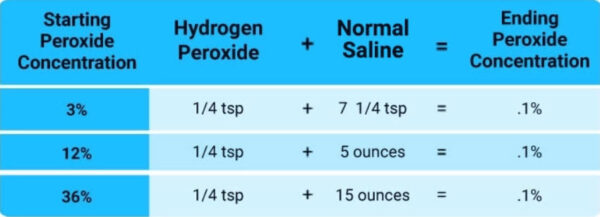
Do not mix the peroxide with straight distilled water, as this could potentially cause physiological damage. You need the salt in there. You can, however, make your saline using distilled water.
Using small amounts of peroxide, either IV or nebulizer, only has a good clinical effect. I do not see negative effects with it.
— Dr. David Brownstein
Also, to optimize your benefits, be sure to buy an electric tabletop jet nebulizer. The battery-driven handheld versions simply aren’t as effective. As Brownstein points out, in nearly all cases where patients were not getting better, they were using a handheld nebulizer. Once they got a more powerful version that can drive the peroxide deep into the lungs, the treatment started working as it should.
I strongly recommend buying everything you need beforehand, so that you can treat yourself or your family at a moment’s notice. You don’t want to wait days for your order to arrive before starting treatment.
Mechanisms of Action
What is it about hydrogen peroxide that makes this nebulizing treatment work so well? Obviously, regular peroxide is a topical disinfectant that kills viruses on contact. But it also seems to have a secondary messenger effect. Brownstein explains:
“It’s an oxidative therapy. We’re kind of all conditioned that antioxidants are good and oxidants are bad, but really, you need a balance of them. It’s called a redox. It’s like a teeter-totter. You need oxidants to stimulate the breakdown of old cells, old and injured tissue, and you need antioxidants to stimulate the repair of those old cells and old tissues.
“So, the oxidants do have a benefit. They stimulate the redox pathway, and what I think we’re getting with hydrogen peroxide, ozone, and high-dose vitamin C is that you’re stimulating this redox pathway to move electrons around.
“When you move electrons around you can make energy molecules, ATP [adenosine triphosphate], you can stimulate repair cells and stem cells and get things moving again. The human body produces a tremendous amount of peroxide. It’s produced all over the body in every cell. If this was an oxidant therapy that’s dangerous, why would we produce so much of it?
“Using small amounts of peroxide, either IV or nebulizer, only has a good clinical effect. I do not see negative effects with it. [Vitamin C also] stimulates peroxide production when you use high doses.”
Aside from having antiviral effects, nebulizing peroxide will also improve oxygenation and breathing in general, and can be very helpful for smokers. This makes sense as peroxide breaks down in your body into water and oxygen. Brownstein believes it also has a detoxifying effect on the lungs.
It’s interesting to note that Brownstein and his colleagues never used any of the drug regimens that many doctors swear by, such as ivermectin or hydroxychloroquine.
While he has looked at the scientific literature, noting there’s ample evidence to support their use and safety, all of his patients recovered without them, so he never resorted to prescribing either of them. Brownstein didn’t even use zinc, which is a staple nutritional intervention for viral infections.
For patients who travel and worry about getting sick, he simply reminds them to bring their nebulizer, properly diluted hydrogen peroxide and iodine. That way, they can nebulize when they get to their destination, which should effectively kill off any pathogens they might have been exposed to during their travels.
Remedies to Avoid
Aside from knowing what to take and what to do, it’s also important to know what to avoid. Examples include Tamiflu which, when it works, may reduce symptomatic illness for only a couple of hours at best, while having significant side effect risks. Brownstein also advises against Tylenol and other antipyretics such as aspirin and ibuprofen. The reason for this is because you don’t want to suppress your body’s ability to mount a fever. Brownstein explains:
“Fever is there for a purpose. We were designed perfectly to survive viral illnesses, to live to old age and have a good brain function into old age. If we support the body, if we give it the basic nutrients it needs and the basic raw materials and support that it needs, it can do really cool things.
“The problem is, in the toxic world we live in, enzymes are poisoned and receptors are blocked. We take all these drugs that poison enzymes and block receptors. Fever is your friend and the fever’s there for a reason. Bacteria and viruses don’t like a raised body temperature. That’s why the body raises the temperature during an infection.
“It’s trying to make the environment inhospitable for a pathogen. So, the worst thing you can do in that situation, unless the fever is too high—a fever over 103 degrees Fahrenheit, maybe 103.5 104 F. can cause brain problems and seizures, and you can die from a fever.
“But most people don’t get fevers up that high when they’re sick. They get low grade fevers, 99.5 to maybe 101, 102 F. I tell patients, don’t take anything for that. Just support the body and let it do its thing.
“You can control your temperature much better than using antipyretics like Tylenol or ibuprofen by taking a tepid bath or sponge bathing with tepid water. A bath with Epsom salts was very helpful for viral illnesses over the years.”
The Problem With Tylenol
Tylenol in particular is also problematic for other reasons. Importantly, it poisons the enzyme that makes glutathione, a very potent antioxidant that your body produces intracellularly. When you’re dealing with a bacterial or viral infection, you want your body to make more glutathione to support affected cells. If you take Tylenol, you block that process.
“Tylenol also has a very narrow window of toxicity, meaning that if you go over the recommended dose on the label, but not by much, you can get Tylenol toxicity. The liver starts to break down and people die from this,” Brownstein warns.
“The treatment for Tylenol toxicity is intravenous N-acetylcysteine (NAC), which is the precursor to making glutathione.
“And as far as Motrin and ibuprofen and aspirin goes, at the beginning of the crisis, I saw three patients who told me when they took the first dose of Motrin for a fever, they collapsed, their system went to hell, they had trouble breathing. Everything got worse an hour or two after that first dose of ibuprofen.”
Back to Basics
Brownstein stresses that it’s not just about taking certain supplements or nebulizing when you’re ill. You also need to clean up your diet. The best treatment is prevention, which you’ll achieve through proper diet and a healthy lifestyle on a daily basis.
That said, when you do get acutely ill, if you haven’t already eliminated processed foods, which are loaded with sugar and harmful fats, omega-6 linoleic acid (LA) in particular, that’s the time to do it.
Research actually suggests hydrogenated LA can radically increase your risk for COVID-19 because the LA is part of the strategy the SARS COV-2 virus uses to infect your cells. I describe this in “The Type of Fat You Eat Affects Your COVID Risk.” So, you’ll want to dramatically limit vegetable oils and other sources of LA and focus on organic whole foods.
Together, eating “clean” and addressing any nutritional deficiencies you may have (and testing is the best way to go about determining that) can go a long way toward preventing severe infections.
To learn more, be sure to pick up a copy of “A Holistic Approach to Viruses.” You can also find more information about iodine, ozone therapy, and much more on his website, www.DrBrownstein.com.
Originally published May 6, 2021, on Mercola.com
Reference
[1] Science, Public Health Policy, and the Law July 2020; 2: 4-22 (PDF)
Views expressed in this article are the opinions of the author and do not necessarily reflect the views of The Epoch Times. Epoch Health welcomes professional discussion and friendly debate. To submit an opinion piece, please follow these guidelines and submit through our form here.




